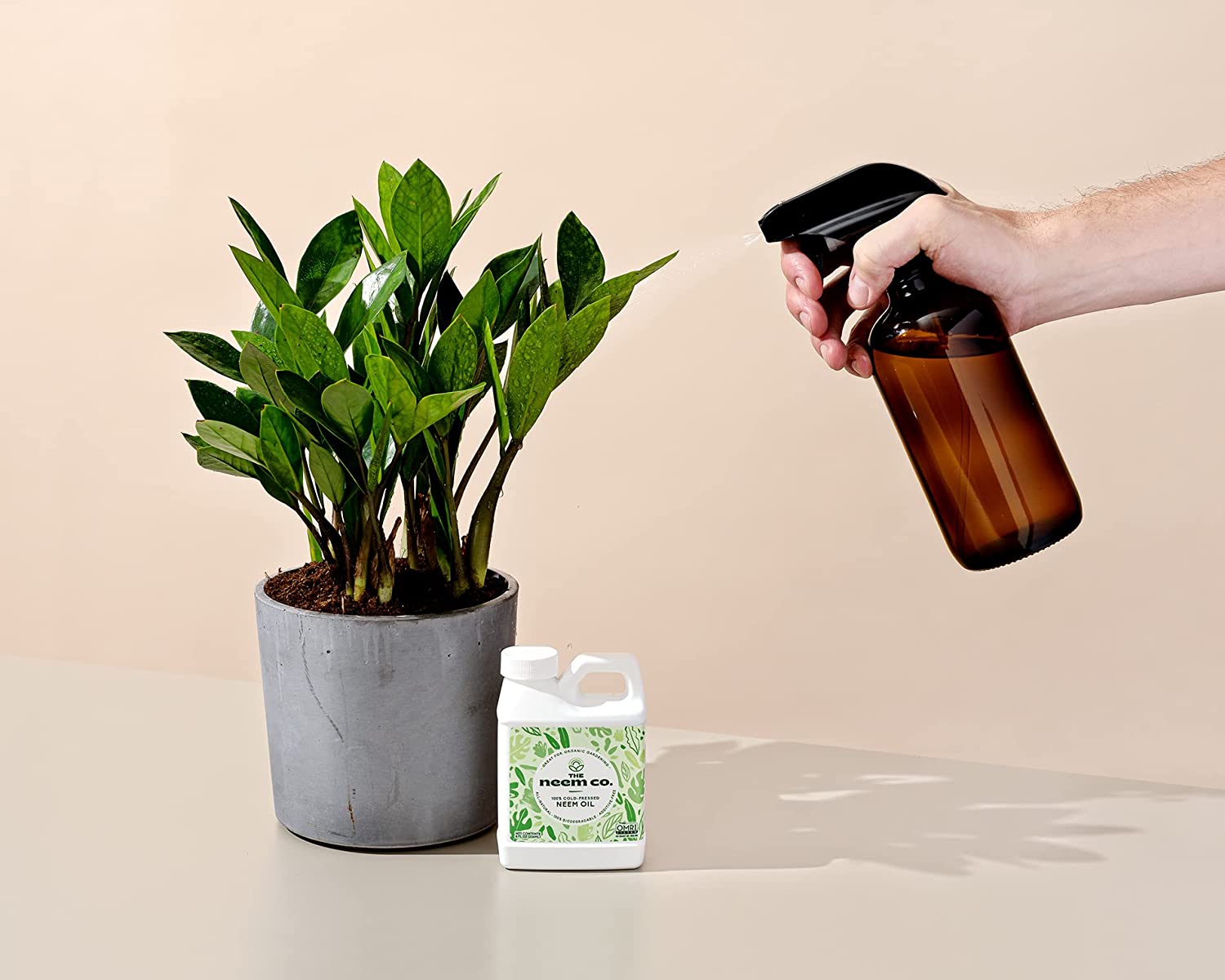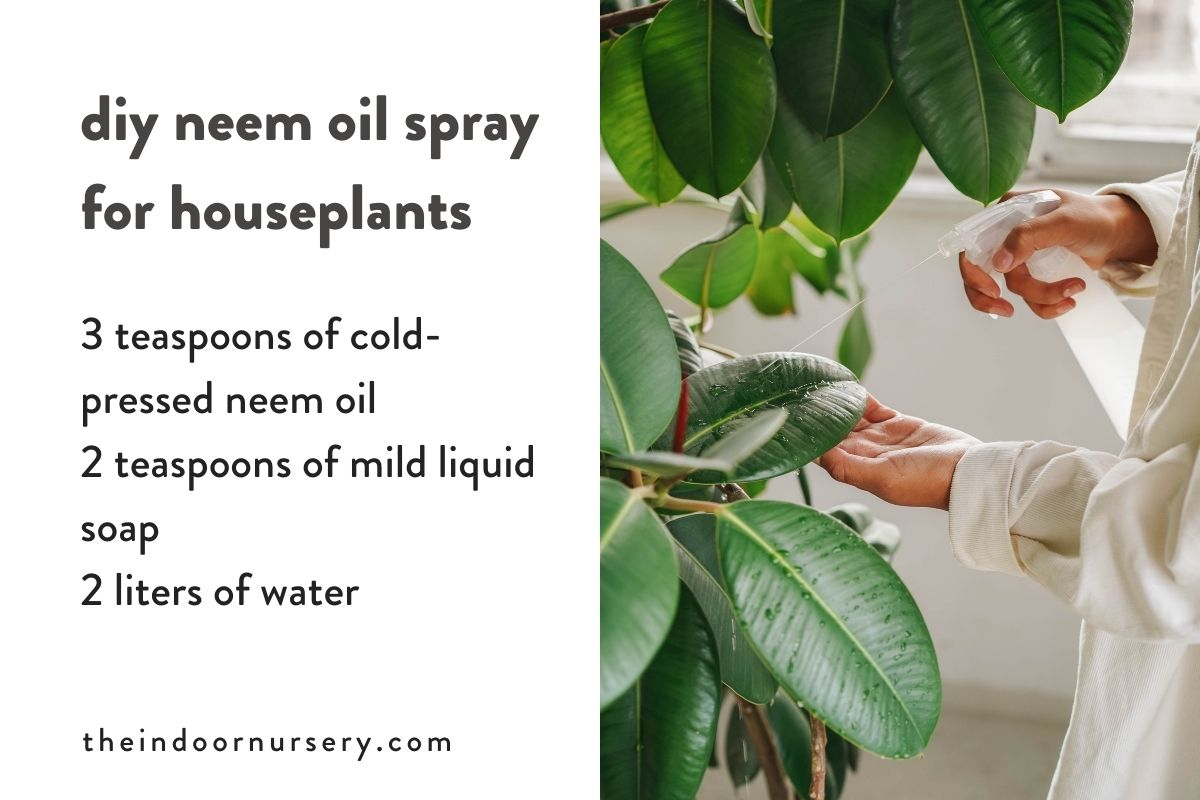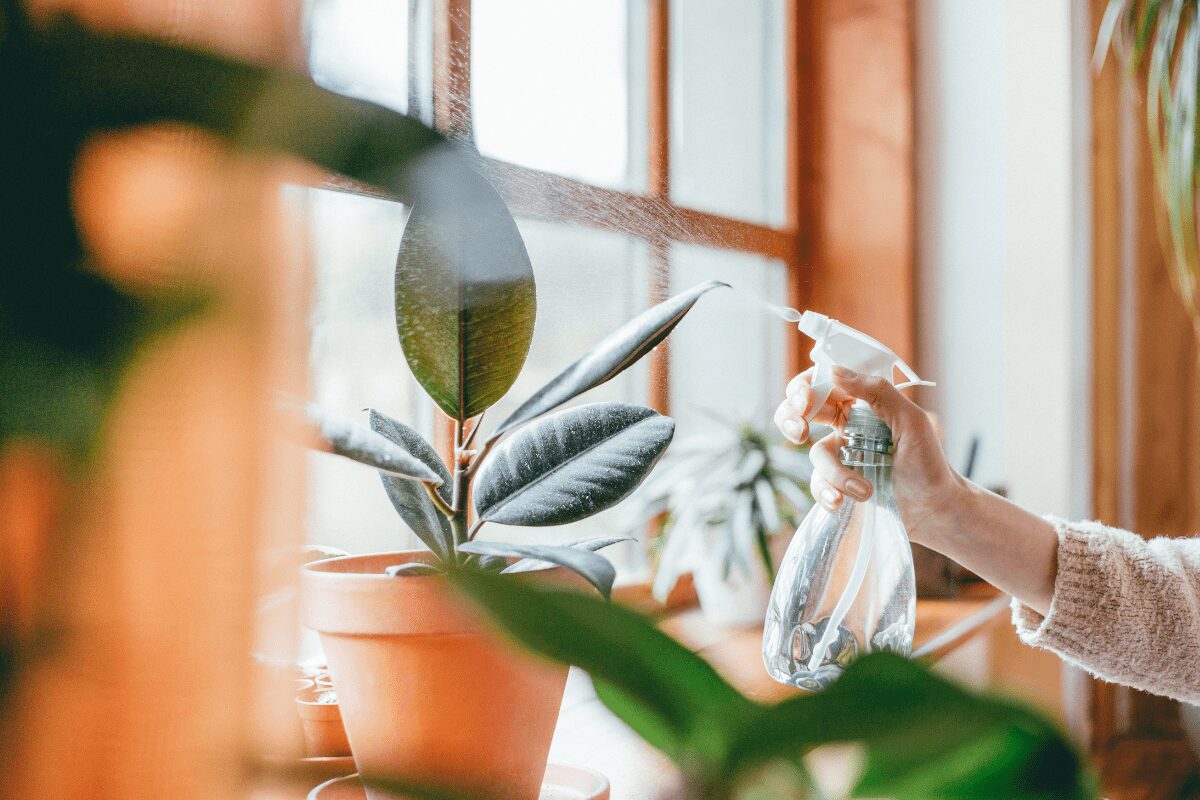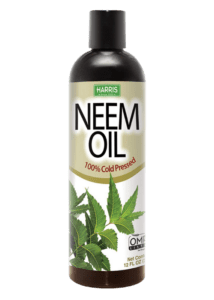Neem oil is a popular way to naturally protect both indoor and outdoor garden plants against pests, but in some cases, it may cause more harm than good.
Most plants are tolerant of neem oil, but some plants are sensitive to it, and any plant can be damaged by applying neem oil in the wrong way. 💔
When used properly, a homemade neem oil spray will deter pests from settling on the plant, and if they do, the neem damages the eggs and larva, as well as harming and suffocating mature ones.
If the oil is applied undiluted, or if it isn’t wiped off, the oil can damage the leaves of any plant from clogging the pores, interfering with photosynthesis, and by heating up from sunlight and causing burns.
Some plants, however, will be damaged even by proper use of a neem oil solution. These are mostly flowers, herbs, and vegetables with tender leaves and vegetation that can’t tolerate any oil on their fragile leaves, stems, and petals.
Here, we’ll go over how neem interacts with houseplants, how you can use it safely and effectively, and which plants require an option other than neem oil to prevent or manage pests.
Which plants don’t like neem oil
Although most plants will tolerate a neem oil application as a preventative or as treatment for pests, a few types are too sensitive for even a diluted solution:
- Baby plants – neem oil shouldn’t be used on baby plants, whose small and tender leaves are still developing. Neem oil sprays need to be wiped off after being sprayed, and, unlike mature plants, handling too-young leaves can tear them while they’re still very fragile.
- Herbs – many herbs that we grow to eat, like dill, oregano, basil, cilantro, rosemary, and parsley, can be damaged by neem oil in the same way a baby leaf would. Their delicate leaves can be torn when handled, and an oil application can easily overwhelm and clog the pores of the tissue.
- Certain leafy vegetables – some vegetables with thin, delicate leaves like lettuce, arugula, and spinach don’t hold up well when given an oil treatment. Their leaves can be easily damaged and will readily absorb the oil. This is in contrast to hardier vegetables like leeks, swiss chard, and onions, whose dense greenery can tolerate an application of neem oil as necessary.
Can neem oil burn plants?
Neem oil is made by cold pressing the seeds of the neem tree, which contains a compound called azadirachtin, the active ingredient that damages an insect’s hormonal system and eventually kills it.
Only cold pressed neem oil should be used since it keeps the active ingredient intact.
Neem oil may be used as a systemic pesticide, where a diluted solution is added to the soil and the plant takes the chemical up through its roots, which then gets distributed into its internal sap.
The taste deters pests from eating it, and when it’s applied topically with a spray bottle or used to wipe down leaves, the scent is similarly repellant to the pests.

Neem oil must be applied, whether to leaves or soil, in a diluted form. When applied to leaves, even a diluted solution can result in burns if it’s exposed to too much light. The oil absorbs heat from the sun (or from a grow light) and the high temperatures can quickly damage a plant’s tissue.

Damaged leaf tissue isn’t able to perform photosynthesis, resulting in less energy production by the leaf as a whole. 💔
Undiluted neem oil will clog the stomata, or pores, of a leaf, interfering with transpiration (water vapor exchange), respiration (oxygen and carbon dioxide exchange) and photosynthesis, which can result in damaged tissue.
WARNING: Pure neem oil is thick and can heat up more quickly than oil that’s mixed with water, leading to substantial burns.
Neem oil, even diluted solutions, needs to be wiped off from the plant’s leaves after 30 to 60 minutes. Otherwise, as the oil dries, it will leave a residue that interferes with those aforementioned vital processes.
When a neem oil application heats up, it can easily burn a plant’s leaf or stem tissue. Physical damage from burning or tissue that has been severely damaged from lack of respiration, transpiration, or photosynthesis can similarly result in dead tissue that isn’t able to recover.
What do neem oil burned leaves look like?
When plants are burned by neem oil, black or brown spots will show up on the leaves where the oil was applied. The dry, crispy leaf tissue won’t be able to produce energy, and if more than half of the leaf has been damaged, it may not be able to survive.
Depending on the type of plant and the extent of damage, the ability to save the plant will vary.
In this example from Reddit of a monstera that was burned by spraying neem oil on leaves that were exposed to the sun, responders suggested leaving the crisped leaves on the plant until they fell off on their own.
In the photos, it shows that only one leaf was severely damaged, with over half of the leaf having burnt and dried out. Other leaves were scorched, faded, or burned at the edges, but still had enough healthy cells and chloroplasts to perform photosynthesis and feed the plant.
New growth will eventually allow the plant to drop the damaged leaves, and for the health of the plant, leaving the unsightly leaves until they fall off by themselves can help the plant’s recovery.
This Redditor’s calathea was damaged after a too-strong application of neem oil followed by a drying session outdoors in the sun.
The photos show the burnt, crisped, and curled edges on some of the leaves, which still have a substantial amount of green. In this case, many of the leaves are damaged, but since they can still photosynthesize, they will contribute to keeping the rest of the plant alive, healthy, and producing new leaves. The damaged leaves will eventually die off, or can be trimmed once new growth begins to emerge.
Another post on Reddit shows a rubber plant whose leaf has been damaged by oil burn.
The comments reassured the user that the leaf will continue working, even if that part of the leaf’s tissue has been damaged beyond repair. One of the top comments emphasizes that despite the burn, as long as the plant puts out new growth, the plant is healthy enough to survive and will recover, even if the individually damaged leaves won’t revert back to fully green.
As these examples show, sun damage on plants after a neem application can be harmful, but it isn’t always deadly.
As long as the plant isn’t kept in bright sunlight when you apply neem oil, either preventively or to treat a pest infestation (like scale, spider mites, or thrips), the problem should remain isolated to where the damage was done.
This doesn’t mean, however, that a damaged leaf won’t continue to get worse since its photosynthesis productivity will be lowered. If it’s not productive enough, that leaf will simply fall off when it’s ready.
Closing thoughts
For neem sensitive plants, insecticidal soaps and diluted hydrogen peroxide applications are alternatives to neem oil products for cleaning large leaves or for treating pest infestations on your houseplants.
When it comes to growing leafy foods and baby plants, keeping their grow tent closed and clean is the best defense against pests. In any case, regular monitoring for insects and keeping plants out of direct sunlight will keep your indoor plants happy, healthy, and as productive as they can be!
More About Pest Control
- How To Get Rid Of Scale On Plants
- The Best Neem Oil For Plants: Our Top Picks
- How to make homemade spray to keep cats from eating plants
- 12 essential oils for plants that treat pests, fungus, and more
- How to mix neem oil for plants with 3 simple ingredients
- What plants NOT to use neem oil on
- Most common cannabis pests and how to treat them





